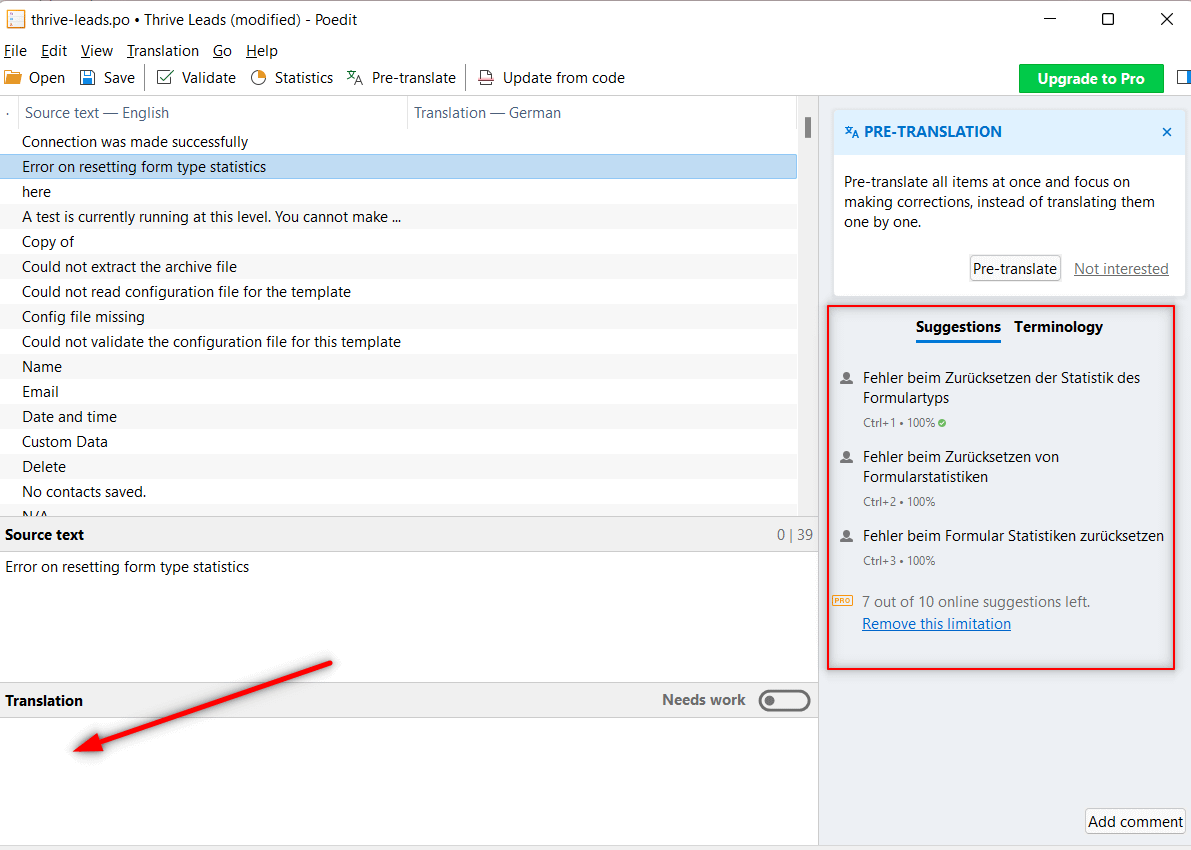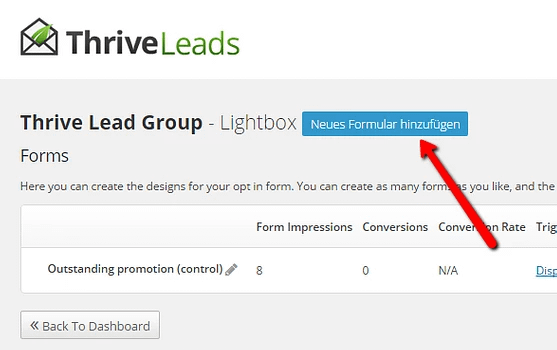Here is a guide for you on how to translate your Thrive plugin using Poedit. In this example, you will see how to translate the Thrive Leads plugin in German, but the same principle can be applied to all our plugins and all other available languages.
1. Download and install the Poedit editor
Next, you can proceed with downloading the Poedit editor.
You can find it here. For now, all you need to do is download the version suitable for your setup (Windows, OS, etc.) and install the software:
2. Open the specific file and translate the desired phrases/words
After you have downloaded and installed your Thrive plugin, Thrive Leads in this case, you can find the files you need to translate by following this path:
yousite.com/wp-content/plugins/thrive-leads/languages
The name of the file found here is constructed by following these rules:
thrive-{plugin-identifier}.poWhere “plugin-identifier” can have the following values (for example):
- ult for Thrive Ultimatum
- cb for Thrive Architect
- leads for Thrive Leads
Open the thrive-{plugin-identifier}.po file with Poedit (just right click on it and select “Open”) and the system will open the file automatically in Poedit.
Here, click on the “Fix language” button:

Alternatively, you can also go the the “Translation” tab and select “Properties” for the same action.
In the window that opens, choose the desired language in which you wish to translate your theme:
Now, you can begin translating phrases/words. You can also use the suggestions from the right hand side of the window:

After you have translated all the phrases needed, make sure to save the catalog by clicking the “File” tab and then on “Save”.
3. Rename and move the translated files
Once you have saved the catalog, you will end up with two files. One that has a .po extension and one with .mo.
You will have to rename the files, from having this name:
thrive-{plugin-identifier}.poto this:
thrive-{plugin-identifier}-{local language}.poLocal language is the WordPress locale code for the translated language. You can find a list of them on the WordPress Codex.
In our case, for German, the new file names will be this:
thrive-leads-de_DE.po
thrive-leads-de_DE.moCaution: You can end step 3 here and jump to step 4 and the translation will work. However, we must warn you that if you do this, when you will upgrade the plugin, the translation will be lost.
Once you have renamed the files, you need to move them to this path:
yoursite.com/wp-content/languages/thriveIf you haven’t translated any of our products yet, you will have to create that “thrive” folder.
4. Switch to the new language in WordPress
Once you have given the files the correct file name and moved them to the required folder, you can change the theme’s language.
You need to go to your general settings of your WordPress admin dashboard, and switch your website’s language to the one you want to translate into:

Save the changes and once you preview your website, the translated phrases will be visible:

Important notes:
- If some words are not translated, check the thrive-{plugin-identifier}.po file to make sure that the words are there, if not, please let us know;
- Each time new words are added to the thrive-{plugin-identifier}.po file you will have to recreate your own file and generate the .mo file;
- If you have a caching plugin, after you add new translations, please clear the cache.
5. Update the translated files
When we add new words in the plugin and you will want to have them translated also, you will have to update your current .po file.
To do this you will either edit it manually or use Poedit. The second choice is the easiest and recommended.
Open your current .po file that already has some translations. From the menu go to Catalog and select “Update from POT file…”.
From there you will select our new .po file from (Thrive Leads example):
yoursite.com/wp-content/plugins/thrive-leads/languages/thrive-leads.poPoedit will identify the new words and only add those. Translate those new words and save the file.